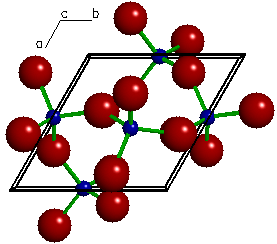


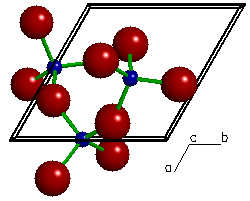
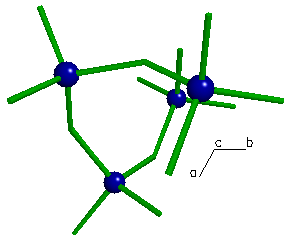
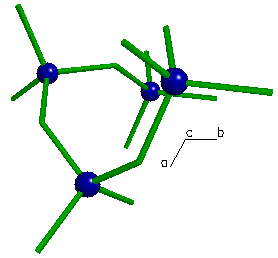
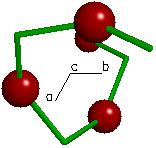
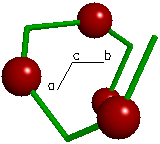
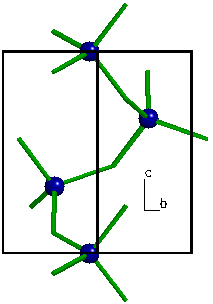
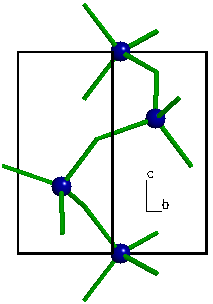
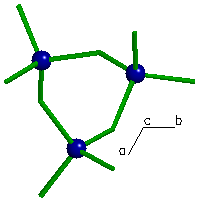
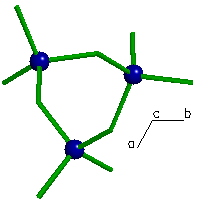
The crystal structure of
Left/Right-Handed Quartz (SiO2)
Various views of left- and right-handed quartz generated using the program Xtaldraw. The following examples are meant
to serve as an introduction to translational and
rotational symmetry as well as to illustrate some
of the program features. Note that these pages are a work in
progress - slow work.
 |
 |
| Figure 1a. A "ball and stick" view of the crystal structure of left-handed quartz viewed down the c-axis direction of the unit cell. | Figure 1b. A "ball and stick" view of the crystal structure of right-handed quartz viewed down the c-axis direction of the unit cell. |
 |
 |
| Figure 2a. Isolated portion of the unit cell focusing on the lower left triangular group of tetrahedra. | Figure 2b. Isolated portion of the unit cell focusing on the lower left triangular group of tetrahedra. |
 |
 |
| Figure 3a. If we remove the oxygen atoms and the unit cell outline and increase the drawing perspective, we can see how the silicon atoms spiral downward in a counter-clockwise (left) direction. Therefore, Figure 1a represents left-handed quartz. | Figure 3b. If we remove the oxygen atoms and the unit cell outline and increase the drawing perspective, we can see how the silicon atoms spiral downward in a clockwise (right) direction. Therefore, Figure 1b represents right-handed quartz. |
 |
 |
| Figure 4a. If we look at the center oxygen atom, we can see that it spirals in the same systematic direction as the silicon atom. | Figure 4b. If we look at the center oxygen atom, we can see that it spirals in the same systematic direction as the silicon atom. |
 |
 |
| Figure 5a. If we look perpendicular to Figure 3a we can see each silicon in the unit cell is related by a translation distance of 1/3 the total length of the c-axis. | Figure 5b. If we look perpendicular to Figure 3b we can see each silicon in the unit cell is related by a translation distance of 1/3 the total length of the c-axis. |
 |
 |
| Figure 6a. If we look perpendicular to Figure 5a we can see that each silicon atom is related by a rotation angle of 120º about an axis parallel to the c-axis located in the center of the silicon atoms. | Figure 6b. If we look perpendicular to Figure 5b we can see that each silicon atom is related by a rotation angle of 120º about an axis parallel to the c-axis located in the center of the silicon atoms. |
Xtaldraw | Quartz | Left/Right handed quartz | Silicate Structures | Garnet Sample data file
![]() April 8, 1997 -
© 1997, Kurt L.
Bartelmehs
April 8, 1997 -
© 1997, Kurt L.
Bartelmehs